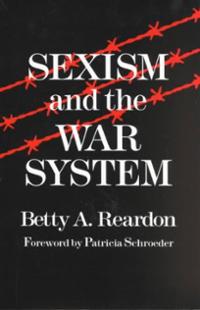by Prof. Laura Ng, University of North Georgia
Where are we?
This was one of my favorite questions when I was a kid–on road trips, school trips, or even going to run errands, I always wanted to know. Now that I am adult, I still find it to be one of the better questions to ask.
This question makes me reflect and consider the past, the present, and the ideal future. Reflection helps me to stop taking things for granted, and analyze the purpose behind what exists. When I engage in peace studies, activism, or education, sometimes I get so caught up in the process that I do not always take time to look at where I started or where I think I am going.
 I started with Betty Reardon. I was doing a paper that had a section on violence and gender, when I came across her book, Sexism and the War System. Her work laid out the foundations of gender and violence. She argues for a merged effort between feminist and peace efforts in research and activism. This powerful notion made me wonder where are we on this journey.
I started with Betty Reardon. I was doing a paper that had a section on violence and gender, when I came across her book, Sexism and the War System. Her work laid out the foundations of gender and violence. She argues for a merged effort between feminist and peace efforts in research and activism. This powerful notion made me wonder where are we on this journey.
Other scholars and activists have taken up the challenge that Reardon presented. Theorists like Annika Bjorkdahl look at how binary thinking of gender traits and global
peace movements work and do not work . While reviewing UN Security Council resolution 1325, Nicola Pratt uses gender as a measuring stick in analyzing faults and progress. In Pratt’s article, she states that gender must be considered when crafting policies to mold the idea and future of peace. While this criticism of 1325 is valid, Pratt also points out that on other issues, it is a milestone that the UN has begun gender consideration as a part of its policy making. On one level, it is heartening that gender and race are being considered. On another, I, like many others, am frustrated that the process has taken, is taking, and will take so long to be a natural part of the process and not simply an add-on afterthought. From these works, and the efforts of many others, I can say we have definitely started the journey that Reardon suggested. But I am not really certain where we are in this front.
While we have made a lot of progress with the idea of gender, we still have a greater distance to travel. It is not a simple item to check off a list.
We need to reflect on our solutions and actions to see if how our treatment of gender, both within our communities and our theories, is meeting the complex needs that are inherent in the ideas of gender and peace. Inside our communities we need to acknowledge that we, on some level, tend to use the male/female binary in our conceptions of peace. When I discuss gender and peace, or gender in general, the binary cultural association is usually close to the center of the debate. Acknowledging the power of binary thinking is a good thing. It helps me define the boundaries and challenges of where I am in the larger picture and in my scholarship. Breaking the binary is an even better thing. When I strive to take apart the binary of protector (masculine)/protected (feminine), I am looking at how to take apart the obstacles in a gender-based system. As Bjorkdahl points out, being aware of the binary may help us prevent its recreation in our peace processes.
In the discussion of gender, peace, and violence, we need to be careful that the solutions we create do not foster damaging systems.
Equally important is realizing this simplistic conceptualization of gender hampers us as well. As Bjorkdahl notes, gender is something that appears in connection to many other attributes, but the idea of keeping the perspective of gender limited to two categories overlooks this complexity. It tempts us to give simple solutions based on overly simplified idea of gender. If we admit that the variables that go into gender and gender’s conception are complex, then we should also be ready to admit that gender is more than two categories, an idea the LGBT communities would endorse.
Maybe I need to ask a new question: where are the LGBT communities in peace studies?
 Their concerns are gender issues as well, but our binary default thinking does not make room for these communities. This wider array of gender is something that needs to be taken into consideration when looking at peaceful resolutions to conflicts. The LGBT communities certainly face the systematic violence Reardon outlines in her works. However, their voices do not seem to be at the table when it comes to negotiating peaceful resolutions.
Their concerns are gender issues as well, but our binary default thinking does not make room for these communities. This wider array of gender is something that needs to be taken into consideration when looking at peaceful resolutions to conflicts. The LGBT communities certainly face the systematic violence Reardon outlines in her works. However, their voices do not seem to be at the table when it comes to negotiating peaceful resolutions.
When we reflect on how gender lives in peace studies, activism, and education, we need to ask ourselves questions about multiple considerations of gender and move past binary thinking.
Leaving behind the binary system may require some uncomfortable steps, but being uncomfortable is a part of learning.
It means our views of the problems will become more complex. It means our answers will be more complex, as well, with all of the beauty and frustration inherent in that complexity. Above all, it means we will need to be thoughtful in our approaches and goals. As long as gender matters to us, then it matters in how we construct our world.
Ultimately, it means that viewing peace-work through the lens of gender is as much as necessity now as when Reardon called first suggested it.
References and notes:
[1] Reardon, Betty. Sexism and the War System. New York: Teachers College Press, 1985. Print.
[2] Bjorkdahl, Annika. “A Gender-Just Peace? Exploring the Post-Dayton Process in Bosnia.” Peace & Change. 28.2 (2012). Print.
[3] Pratt, Nicola. “Reconceptualizing Gender, Re-inscribing Racial-Sexual Boundaries in International Security: The Case of the UN Security Council Resolution 1325 on ‘Women, Peace and Security.’” International Studies Quarterly. 57.4 (2013). Web. 15 May 2014.
[4] Bjorkdahl’s discussion does a great job of looking at the factors of the complex cultural idea of gender.










[…] This question makes me reflect and consider the past, the present, and the ideal future. Reflection helps me to stop taking things for granted, and analyze the purpose behind what exists. When I engage in peace studies, activism, or education, sometimes I get so caught up in Read on…. […]